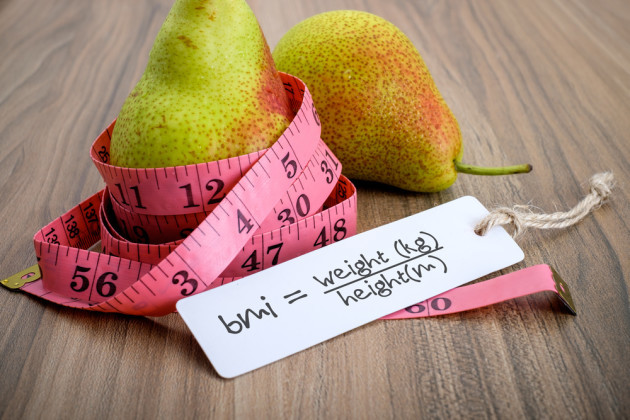BODY MASS INDEX (BMI) has been used to measure obesity since the 1800s and is still utilised by healthcare professionals today as a benchmark for an individual’s percentage of body fat in the form of a number — which consequently categorises you into underweight, normal/healthy weight, overweight and obese.
While its relative simplicity means it has potential to be an efficient way of discovering one’s risk of weight-related chronic illnesses, it has become somewhat of a controversial measure due to its many limitations.
As a relative measure of weight (calculated by dividing your weight in kilograms by your height in metres squared), it provides an inaccurate and incomplete picture of an individual’s health as it fails to account for a number of factors, such as sex, age and body composition. It has its benefits; it’s simple, non-invasive, cost effective and doesn’t require a clinical setting. This makes it a somewhat useful tool in assessing large groups of study subjects and identifying trends/gathering data on larger segments of a population. But when it comes to personal health, BMI falls flat on quite a few grounds.
BMI doesn’t account for body composition
When assessing composition, the overall value is typically broken down into fat mass and fat-free mass. Fat-free mass contributes to overall health (along with essential fat which is, well, essential to survival), whereas an excessive amount of non-essential fat negatively affects our health.
With BMI, all weight (fat mass and lean mass) is created equal, which is simply not the case. For example, a six foot, 100 kilo, muscle bound athlete and a six foot, 100 kilo sedentary individual with increased body fat could share the same BMI, in fact both would be deemed ‘obese’.
Seems legit…
BMI doesn’t account for how or where you store body fat
While it seems fairly obvious that excess amounts of body fat negatively affect our overall health, how and where you store this fat is a major factor in gauging your individual disease risk.
Subcutaneous fat is the fat that you can see and pinch and while aesthetically it may be associated with poorer health, it actually poses a lower risk than visceral fat.
An accumulation of fat around your waist/midsection can be something of a red flag when it comes to visceral fat; that is the fat that is stored around organs such as your liver, kidneys and pancreas. It is more metabolically active; releasing fatty acids, inflammatory agents and hormones that can lead to higher LDL cholesterol, triglycerides, blood glucose and blood pressure (not good!).
Thin doesn’t necessarily equal healthy
BMI makes the assumption that if you’re not overweight then you’re not at risk. In reality, people with a lack of muscle mass and increased body fat are just at much at risk as their ‘obese’ counterparts (especially if the fat is visceral). A study published by the International Journal of Obesity in 2016 drew the conclusion that there was little correlation between metabolic health and BMI — with nearly 50% of those categorised as ‘overweight’ and 29% of ‘obese’ individuals being metabolically healthy. The same study found that 30% of those categorised as ‘normal/healthy’ weight were at an increased risk of heart disease, diabetes and stroke.
The bottom line is that while BMI has good utility in measuring health and disease risk in larger populations, it alone does not determine your individual health. It’s a worthwhile endeavour investigating additional tools to obtain more information and gain a greater insight. Take a more holistic approach and use several measures to assess your health. There is a smorgasbord of parameters and numbers that can be used, some more relative than others.
Health markers related to metabolic disease, such as the aforementioned blood pressure, blood glucose, cholesterol and measures of insulin resistance and inflammation can give you a more detailed insight into your overall health, but if you want to know more about your visceral and subcutaneous fat distribution, a bone densitometry scan (DEXA) is considered the gold standard. This is due to its associated accuracy and reliability, however, these can be expensive and difficult to schedule regularly.
There are more convenient and inexpensive methods of measuring body fat; skinfold caliper, bioelectrical impedance etc., that are available in most fitness facilities and can give you a good indication of your individual risk, but lack the reliability of a DEXA scan.
Waist circumference is a measure that requires nothing but a tape measure and can estimate the fat distribution in your body and associated risks. More than 35” for females and 40” for males indicates an increased risk to your health…simple.
It’s also worth considering that obesity is a multifaceted and complex disorder and no single number can simply represent a healthy weight. Excess weight, obesity and body fat don’t typically just happen, they are generally associated with other negative health and lifestyle behaviours. Assess other risk factors, such as family history of obesity related diseases, sedentary lifestyle, poor nutrition, smoking and increased stress. The categorisation of individuals into ‘underweight’ or ‘obese’ can sometimes be the wake up call needed to prompt people to think about their health on a larger scale, but BMI alone is not enough, it is a tool best used in combination with other measures to get a more accurate picture of your long term health.
Sarah Cremen is a personal trainer and physiotherapist based in David Lloyd Riverview in Dublin. For more health and fitness advice and tips, you can follow her on Facebook and Instagram, and you can find her website here.
The42 is on Instagram! Tap the button below on your phone to follow us!


